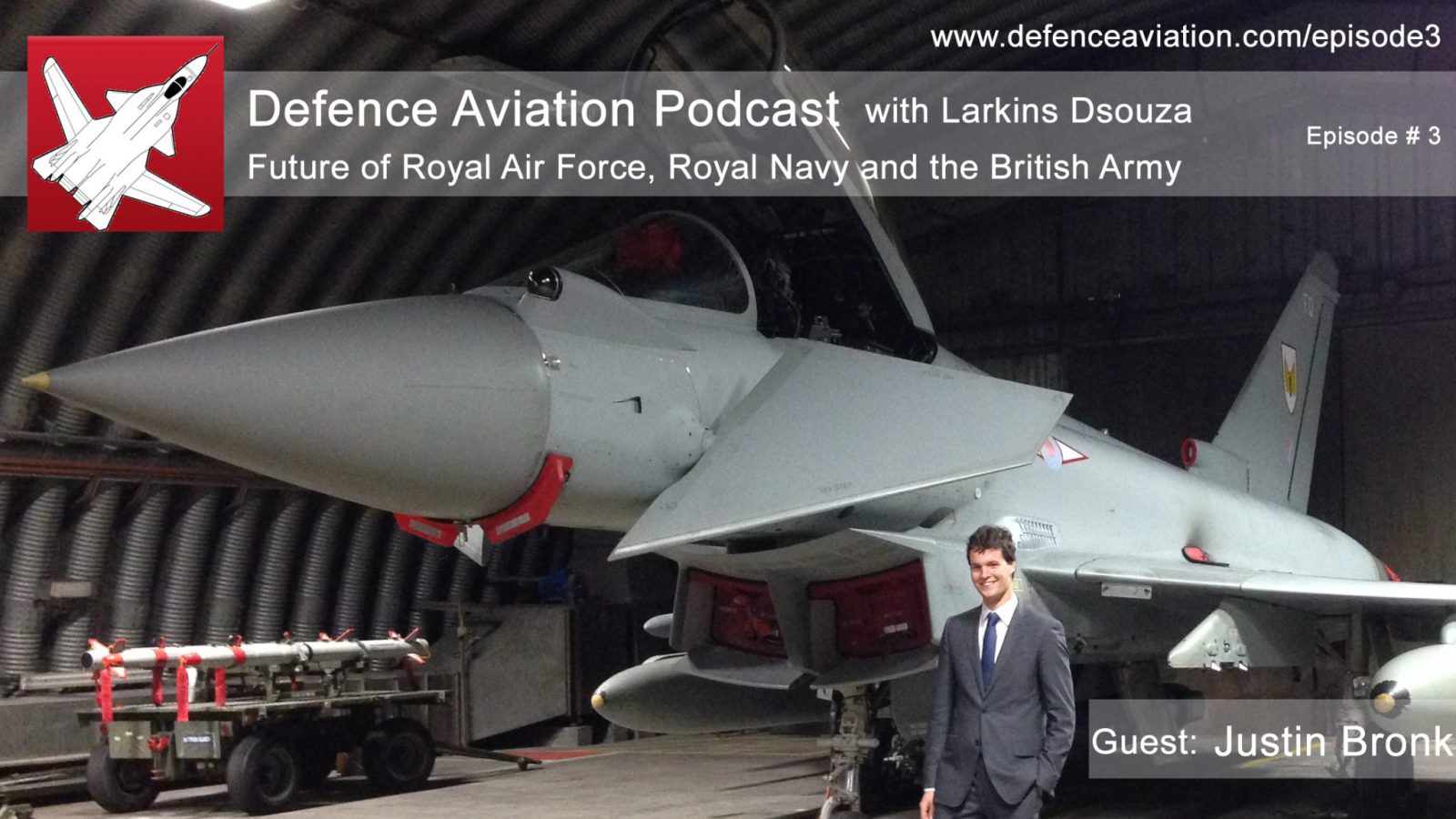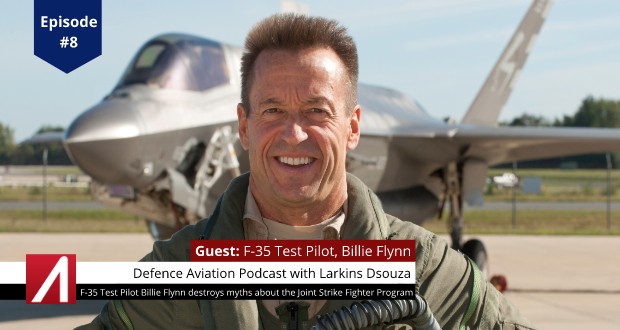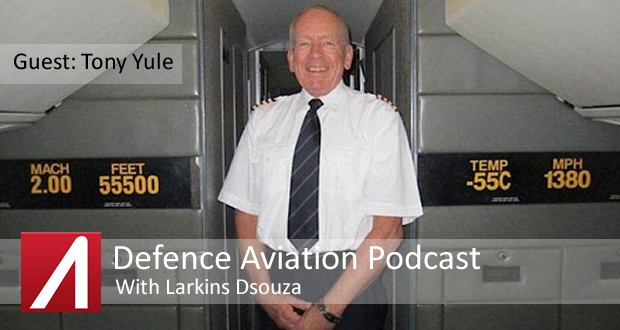In this episode I interview Justin Bronk a Researcher for Combat Air-power and Technology in the Military Sciences team at the London based defence think-tank the Royal United Services Institute. He is currently working on various projects including in depth study into how to get the most value from the F-35 for the Royal Air Force and the Royal Navy which will be published in the very near future.
You can stream using the player above or download the mp3 to your computer or handheld devices. Right-click here to download the MP3.
The F-35B STOVL version will now be the first variant operated by the UK. It was originally chosen to operate off the ski-jump equipped Queen Elizabeth aircraft carriers but in the strategic defence and security review 2010, the government changed the plan to catapult-equipped carriers and the F-35C version – like the US Navy. The advantages of the C variant over the B include better range, greater payload and greater bring-back weight capability. However, the costs of the C variant and worries over the state of the art EMALS electromagnetic catapult for the QE carriers led to a reversion to the F-35B in 2012.
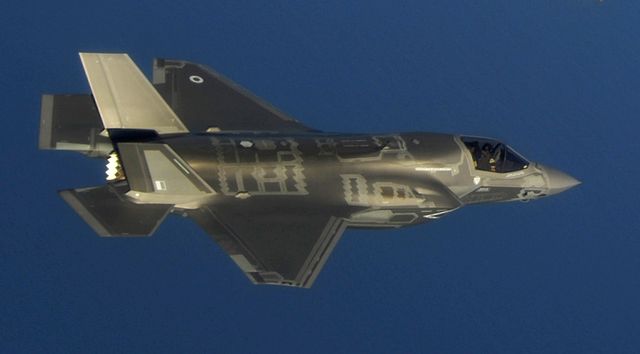
The UK will initially purchase at least 48 F-35Bs and potentially more. However, since the government confirmed in the SDSR 2015 that the UK plans to eventually acquire 138 F-35s, there is a question mark over what the remaining bulk order will be. I would suggest that it is most likely that the bulk of the remaining F-35s will be the conventional F-35A version as operated by the US Air Force. This version is cheaper, has longer range and greater internal weapons payload capacity, as well as an internal gun. Eventually, I can see the RAF operating F-35As whilst the Royal Navy will take full control over the initially joint F-35B force to operated from the QE carriers.
Tornado is a very capable attack and reconnaissance platform but it is nearing the end of its UK service life. It will be retired on current plans in 2019 with the three remaining squadrons converting to the Typhoon. Typhoon is fast maturing as a multi-role asset. Long a formidable air superiority fighter, the latest P1Eb software block enables tranche 2 and 3 Typhoons to use the Lightening III targeting and reconnaissance pod to guide Paveway IV laser and gps guided bombs. Once the Storm Shadow cruise missile and Brimstone II anti-armor missile are integrated onto Typhoon in 2016 and 2018 respectively, the aircraft will be fully ready to take over from Tornado.
The one exception is the DB-110 RAPTOR wide area surveillance pod which Tornado carries but Typhoon currently cannot. There are plans to fit a DB-110 pod to Typhoon but these are not concrete yet. The F-35B will be required by both the Royal Navy and RAF for duties at sea and ashore. For the initially small number of F-35Bs in service, this will mean small deployments to support the backbone of Typhoons in particularly dangerous theaters. Towards the early 2030s, Typhoon will start to be drawn down over about a decade (as Tornado has been in the 2010s) and probably replaced by F-35As and possibly a future combat UAV.
The Queen Elizabeth, the first of the two new aircraft carriers will be embarking F-35Bs for deck hopefully in late 2018 for an initial deck operating capability in around 2020 and full operating capability in 2023. The Prince of Wales will be following a schedule around five years behind the Queen Elizabeth but with a greater emphasis on amphibious assault capabilities with the Royal Marines and large helicopter capabilities, as well as F-35B capability.
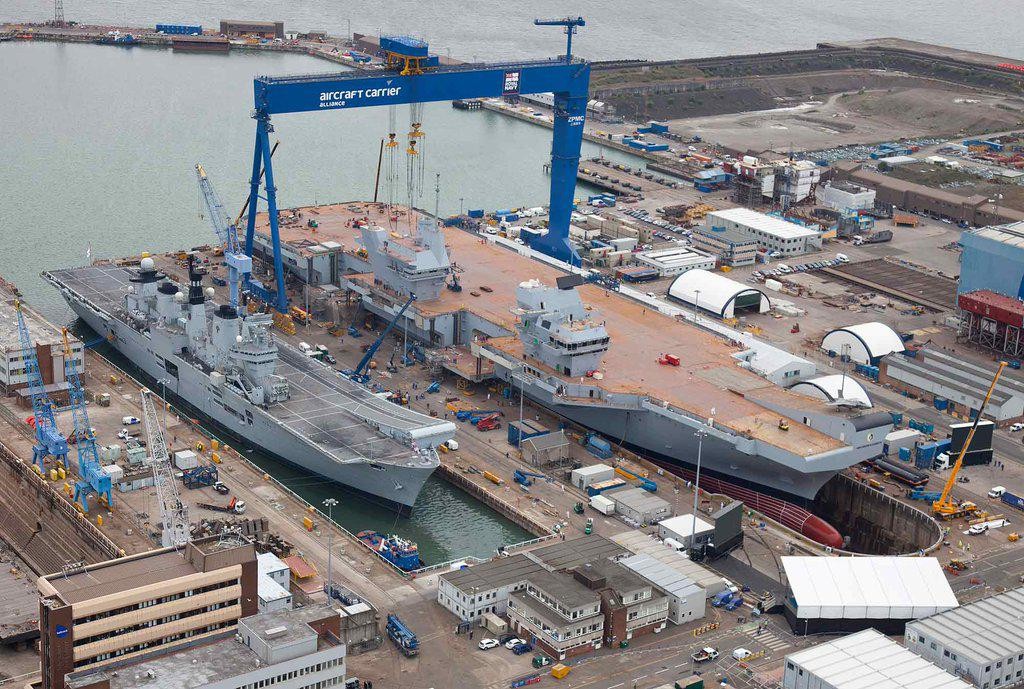
The largest current difficulty for the QE/F-35B combination is to see what sort of opponent it would be suited for. Against a serious near-peer threat such as Iran, the Queen Elizabeth would have to get relatively close to the enemy shoreline due to the short range of the F-35B and the lack of an on-board aerial refueling aircraft. However, in doing so, the carrier would be under severe threat from anti-ship missiles and small boat swarms, as well as small, quiet diesel-electric/AIP submarines. The Royal Navy does not have the capacity to put US carrier battlegroup-style protection around the QE without completely denuding it’s ability to operate in other tasks. However, against a less serious Libya-style threat, conventional aircraft such as the Rafale M and F/A-18E/F would offer greater sortie rates, bomb-load and range, at lower cost than the F-35B/ski jump model.
Army 2020, or Future Force 2025 as SDSR 2015 would have it, is a neat attempt to make the best of a bad funding and manpower situation for the British Army. The problem is that trying to optimize the same small force for both ‘soft’ overseas engagement and capacity building, whilst maintaining the capability, skills and equipment to conduct serious war-fighting at the armored battle-group level is almost impossible. Also, whilst the reservist recruitment deficit is not nearly as bad as it was, it is increasingly clear that reservists, however capable and committed, cannot compensate for the loss of regulars in many key roles. However, for the moment there appears to be little appetite for large scale deployments of the Army so there is a long-awaited breathing space for the organization as a whole to regroup, reorganize and decide on the best way to maintain and grow capability in a less than ideal budget and planning situation.

